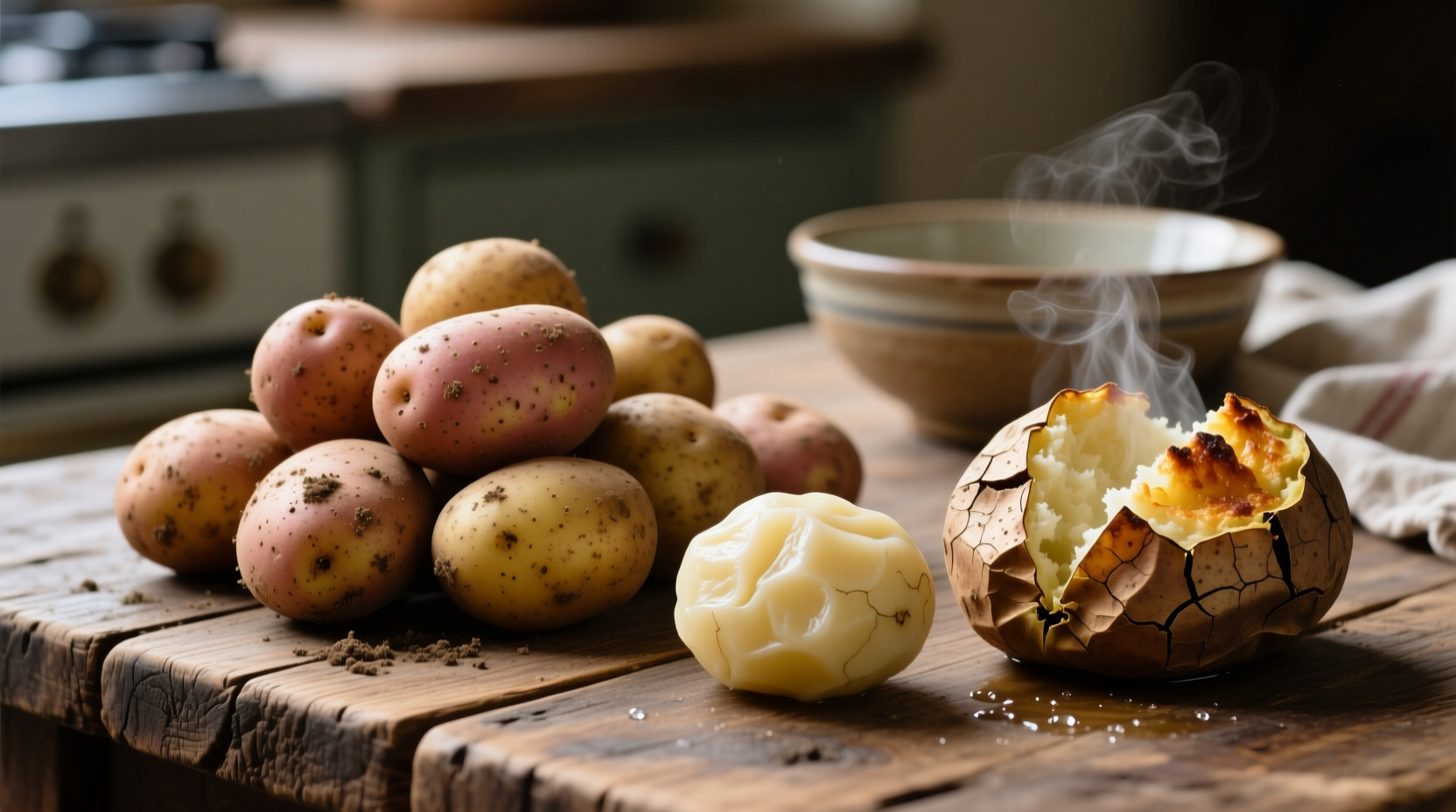Understanding the exact calorie content of potatoes is crucial whether you're managing your weight, tracking macros, or simply making informed food choices. Potatoes often get misunderstood in nutrition discussions, but their actual caloric profile might surprise you. Let's explore the facts behind potato nutrition and how preparation methods dramatically impact their calorie density.
Why Potato Calorie Information Matters for Your Diet
When tracking your daily nutrition, knowing precise values for common foods like potatoes helps create realistic meal plans. Unlike many starchy foods, potatoes offer substantial nutrients beyond just calories. A medium potato (about 150g) provides more potassium than a banana and delivers vitamin C, fiber, and complex carbohydrates that support sustained energy levels.
Registered dietitians consistently note that potatoes' reputation as "unhealthy" stems from preparation methods rather than the vegetable itself. Boiled or baked potatoes with skin intact maintain their nutritional integrity, while frying or adding fats significantly increases calorie density.
Potato Nutrition Breakdown: Raw vs. Cooked
The calorie content of potatoes changes based on preparation method. Here's how different cooking techniques affect the nutritional profile per 100g serving:
| Preparation Method | Calories | Carbohydrates (g) | Fiber (g) | Notable Changes |
|---|---|---|---|---|
| Raw | 77 | 17.5 | 2.1 | Maximum vitamin C retention |
| Boiled (with skin) | 87 | 20.1 | 2.3 | Slight increase due to water absorption |
| Baked | 93 | 21.4 | 2.2 | Concentrated nutrients from water loss |
| Fried (French fries) | 312 | 41.0 | 3.8 | Significant increase from oil absorption |
| Mashed (with milk/butter) | 95-120 | 18-22 | 2.0 | Varies based on added ingredients |
This comparison comes from the USDA FoodData Central database, the most authoritative source for standardized food composition information (fdc.nal.usda.gov). Notice how preparation method dramatically impacts calorie density - a crucial consideration for anyone monitoring their intake.
Context Boundaries: When Potato Calorie Information Applies
While the standard values provide a solid foundation, several factors affect actual calorie content:
- Potato variety matters: Russet potatoes contain slightly more calories than Yukon Gold or red potatoes per 100g
- Skin inclusion: Leaving skin on adds fiber and nutrients while minimally affecting calories
- Storage conditions: Older potatoes develop more sugar, slightly increasing calorie content
- Geographical variations: Soil composition affects nutrient density as documented by agricultural studies
According to research published in the Journal of Agricultural and Food Chemistry, the carbohydrate composition of potatoes can vary by up to 15% depending on growing conditions and variety (pubs.acs.org/journal/jafcau). This means your actual intake might differ slightly from standard values.
Practical Applications for Different Dietary Goals
Understanding potato calories helps tailor them to specific nutrition objectives:
For Weight Management
Boiled or baked potatoes with skin provide high satiety due to their fiber and resistant starch content. A study in the European Journal of Clinical Nutrition found potatoes rated highest for satiety among 38 common foods, helping control overall calorie intake (www.nature.com/subjects/european-journal-of-clinical-nutrition).
For Athletes and Active Individuals
The complex carbohydrates in potatoes provide sustained energy release. Consuming potatoes post-workout helps replenish glycogen stores more effectively than simple sugars alone.
For Blood Sugar Management
Cooling cooked potatoes increases resistant starch content by up to 50%, reducing the glycemic impact. This preparation method makes potatoes more suitable for those monitoring blood glucose levels.

How Potatoes Compare to Other Common Carbohydrate Sources
Putting potato calories in context with other staple foods helps make informed choices:
- 100g cooked rice: 130 calories (higher carbohydrate density)
- 100g whole wheat pasta: 158 calories (higher protein content)
- 100g sweet potato: 86 calories (higher vitamin A content)
- 100g quinoa: 120 calories (complete protein profile)
Unlike refined grains, potatoes provide naturally occurring vitamins and minerals without fortification. Their nutrient package makes them a valuable component of balanced diets when prepared healthily.
Maximizing Nutritional Value: Preparation Tips
You can optimize potatoes' nutritional profile with these evidence-based techniques:
- Cook with skin on: Retains up to 50% more fiber and nutrients
- Cool before eating: Increases resistant starch by 2-3x, improving gut health benefits
- Pair with healthy fats: A small amount of olive oil enhances absorption of fat-soluble vitamins
- Avoid excessive processing: Mashing or ricing breaks down fiber structure, increasing glycemic impact
These preparation methods align with dietary guidelines from the Academy of Nutrition and Dietetics, which emphasizes whole food preparation for maximum nutritional benefit (www.eatright.org).
Addressing Common Misconceptions About Potato Nutrition
Despite their nutritional value, potatoes face several misconceptions:
- "Potatoes are just empty calories" - False: They provide potassium, vitamin C, B6, and fiber
- "All potatoes spike blood sugar" - Oversimplified: Glycemic index varies by preparation and what they're eaten with
- "Sweet potatoes are always healthier" - Not necessarily: Both have different nutrient profiles with unique benefits
Nutrition science continues to refine our understanding of potatoes' role in healthy eating patterns. The key is preparation method and portion control rather than eliminating this nutrient-dense vegetable.
Practical Portion Guidance for Daily Planning
Understanding serving sizes helps incorporate potatoes into balanced meals:
- A medium potato (150g) contains approximately 115-140 calories depending on preparation
- This represents about 5-7% of a standard 2,000 calorie daily intake
- For most adults, 1-2 medium potatoes per meal provides adequate carbohydrates without excess
- Pair with lean protein and non-starchy vegetables for balanced nutrition
Dietary guidelines consistently recommend including starchy vegetables like potatoes as part of a varied diet. The Dietary Guidelines for Americans specifically lists potatoes among recommended vegetable subgroups.











 浙公网安备
33010002000092号
浙公网安备
33010002000092号 浙B2-20120091-4
浙B2-20120091-4